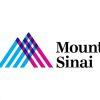- 1-understanding-heart-disease-and-pregnancy-risks
- 2-common-types-of-heart-conditions-in-pregnancy
- 3-maternal-health-risks
- 4-fetal-and-neonatal-risks
- 5-management-and-monitoring-strategies
- 6-lifestyle-modifications-and-treatment-options
- 7-real-life-case-studies
- 8-why-choose-heartcare-hub
1. Understanding Heart Disease and Pregnancy Risks
Pregnancy places extraordinary demands on a woman’s cardiovascular system. Blood volume increases by up to 50%, cardiac output rises, and hormonal shifts relax blood vessels. For women with existing heart disease, these changes can unmask latent conditions or exacerbate known problems. Recognizing heart disease and pregnancy risks early enables collaborative care between cardiologists and obstetricians, aiming to safeguard both mother and baby during this vulnerable period.

1.1 Why Cardiovascular Monitoring Is Crucial
Without vigilant monitoring, conditions like pulmonary hypertension or cardiomyopathy can lead to heart failure or stroke. Standard prenatal visits often include blood pressure checks and—but not always—echocardiograms. For at-risk patients, specialized cardiac assessments throughout each trimester offer critical insights.
Atlanta Heart Specialists
atlanta heart specialists
4375 Johns Creek Pkwy #350, Suwanee, GA 30024, USA

2. Common Types of Heart Conditions in Pregnancy
Not all heart diseases carry equal risk during pregnancy. Understanding specific diagnoses clarifies potential complications.
2.1 Congenital Heart Disease
Women born with septal defects or valve anomalies who underwent repair may still face increased risk of arrhythmias or valve dysfunction under the stress of pregnancy.
2.2 Acquired Cardiovascular Disorders
Conditions such as ischemic heart disease, peripartum cardiomyopathy, and rheumatic valve disease, though less common, pose significant threats. Peripartum cardiomyopathy—heart failure onset in late pregnancy or postpartum—carries a recurrence rate of 30–50% in subsequent pregnancies.
3. Maternal Health Risks
Expectant mothers with heart disease face a spectrum of complications:
3.1 Heart Failure and Decompensation
The surge in blood volume can overwhelm weakened hearts, leading to fluid buildup in lungs and peripheral edema. Women may experience severe shortness of breath or orthopnea and require hospitalization for diuretics and inotropic support.
3.2 Thromboembolic Events
Pregnancy is a hypercoagulable state. Combined with impaired cardiac function, the risk of deep vein thrombosis or pulmonary embolism increases. Low-molecular-weight heparin prophylaxis is often prescribed to mitigate this risk.
3.3 Arrhythmias
Hormonal fluctuations and electrolyte imbalances can trigger atrial fibrillation or ventricular tachycardia. Beta-blockers may be used carefully to control rate, balancing fetal growth concerns.
4. Fetal and Neonatal Risks
Maternal heart disease doesn’t affect only the mother—fetal wellbeing can also be compromised:
4.1 Intrauterine Growth Restriction (IUGR)
Poor maternal cardiac output reduces placental perfusion, leading to smaller birth weights and increased risk of neonatal intensive care admission.
4.2 Preterm Birth
Up to 25% of pregnancies in women with significant heart disease deliver before 37 weeks, often due to preeclampsia or maternal decompensation.
4.3 Genetic Considerations
Inherited congenital heart defects may recur in offspring at rates up to 10%. Fetal echocardiography at 18–22 weeks can detect anomalies, guiding perinatal planning.
5. Management and Monitoring Strategies
Optimal outcomes stem from a multidisciplinary approach tailored to each patient’s risk profile.
5.1 Preconception Counseling
Before conceiving, women should undergo risk stratification—assessing New York Heart Association (NYHA) class, ejection fraction, and valve function. Certain high-risk lesions may prompt recommendations against pregnancy.
5.2 Trimester-Specific Surveillance
First trimester focuses on medication safety—avoiding teratogenic drugs like warfarin. Second trimester, when hemodynamic changes peak, requires close blood pressure and echocardiographic monitoring. Third trimester anticipates fluid shifts at delivery, planning for labor analgesia and peripartum ICU care if needed.
5.3 Delivery Planning
Mode of delivery—vaginal versus cesarean—depends on cardiac status. Stable patients often tolerate vaginal birth with assisted second stage to reduce Valsalva stress; those with severe disease may undergo scheduled cesarean in a cardiac-capable facility.
6. Lifestyle Modifications and Treatment Options
Beyond medical interventions, lifestyle plays a critical role in mitigating heart disease and pregnancy risks.
6.1 Diet and Exercise
A heart-healthy diet—low in sodium and rich in omega-3s—helps control blood pressure and fluid retention. Moderate, supervised activity like prenatal yoga or walking supports cardiovascular fitness without overexertion.
6.2 Medications
Safe antihypertensives include labetalol and nifedipine. Diuretics are used sparingly to avoid intravascular volume depletion. Anticoagulation regimens are customized to balance maternal and fetal risks.
7. Real-Life Case Studies
True stories highlight the importance of vigilant care and early collaboration.
7.1 Emma’s Triumph over Aortic Stenosis
Diagnosed with moderate aortic stenosis, Emma underwent balloon valvuloplasty pre-pregnancy. With regular cardiology visits and tailored beta-blocker therapy, she delivered a healthy baby vaginally at 39 weeks without complications.
7.2 Carlos’s Battle with Peripartum Cardiomyopathy
Carlos’s wife developed heart failure symptoms postpartum. Prompt ICU admission and guideline-directed heart failure therapies, including ACE inhibitors and bromocriptine, led to full recovery of her ejection fraction within six months.
8. Why Choose HeartCare Hub
8.1 Expert Multidisciplinary Teams
HeartCare Hub connects you with cardiologists, maternal-fetal medicine specialists, and neonatologists experienced in managing high-risk pregnancies. Their collaborative clinics ensure seamless communication and individualized care plans.
8.2 Cutting-Edge Monitoring Tools
From remote telemetry for home blood pressure tracking to advanced fetal echocardiography, HeartCare Hub uses the latest technologies to detect and address complications early.
8.3 Patient Education and Support Groups
Comprehensive educational resources, personalized risk dashboards, and online support communities at HeartCare Hub empower women to participate actively in their care and share experiences with peers facing similar challenges.





















Deborah Heart and Lung Center
deborah heart and lung center
200 Trenton Rd, Browns Mills, NJ 08015, USA